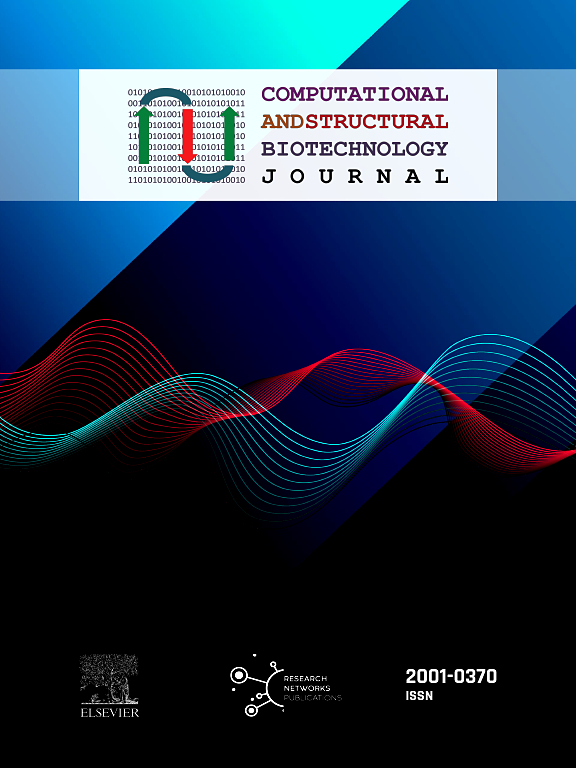Integrative analysis of miRNA expression data reveals a minimal signature for tumour cells classification
IF 4.4
2区 生物学
Q2 BIOCHEMISTRY & MOLECULAR BIOLOGY
Computational and structural biotechnology journal
Pub Date : 2025-01-01
DOI:10.1016/j.csbj.2024.12.023
引用次数: 0
Abstract
MicroRNAs (miRNAs) are pivotal biomarkers for cancer screening. Identifying distinctive expression patterns of miRNAs in specific cancer types can serve as an effective strategy for classification and characterization. However, the development of a minimal signature of miRNAs for accurate cancer classification remains challenging, hindered by the lack of integrated approaches that systematically analyse miRNA expression levels of miRNAs alongside their associated biological pathways. In this study, we present a comprehensive integrative approach that utilizes transcriptomic data from lung, breast, and melanoma cancer cell lines to identify specific expression patterns. By combining bioinformatics, dimensionality reduction techniques, machine learning, and experimental validation, we pinpoint miRNAs linked to critical biological pathways. Our results demonstrate a highly significant differentiation of cancer types, achieving 100 % classification accuracy with minimal training time using a streamlined miRNA signature. Validation of the miRNA profile confirms that each of the three identified miRNAs regulates distinct biological pathways with minimal overlap. This specificity highlights their unique roles in tumour biology and set the stage for further exploration of miRNAs interactions and their contributions to tumourigenesis across diverse cancer types. Our work paves the way for multi-cancer classification, emphasizing the transformative potential of miRNA research in oncology. Beyond advancing the understanding of tumour biology, our step-by-step guide offers a robust tool for a wide range of users to investigate precise diagnostics and promising therapeutic strategies.
求助全文
约1分钟内获得全文
求助全文
来源期刊

Computational and structural biotechnology journal
Biochemistry, Genetics and Molecular Biology-Biophysics
CiteScore
9.30
自引率
3.30%
发文量
540
审稿时长
6 weeks
期刊介绍:
Computational and Structural Biotechnology Journal (CSBJ) is an online gold open access journal publishing research articles and reviews after full peer review. All articles are published, without barriers to access, immediately upon acceptance. The journal places a strong emphasis on functional and mechanistic understanding of how molecular components in a biological process work together through the application of computational methods. Structural data may provide such insights, but they are not a pre-requisite for publication in the journal. Specific areas of interest include, but are not limited to:
Structure and function of proteins, nucleic acids and other macromolecules
Structure and function of multi-component complexes
Protein folding, processing and degradation
Enzymology
Computational and structural studies of plant systems
Microbial Informatics
Genomics
Proteomics
Metabolomics
Algorithms and Hypothesis in Bioinformatics
Mathematical and Theoretical Biology
Computational Chemistry and Drug Discovery
Microscopy and Molecular Imaging
Nanotechnology
Systems and Synthetic Biology
 求助内容:
求助内容: 应助结果提醒方式:
应助结果提醒方式:


